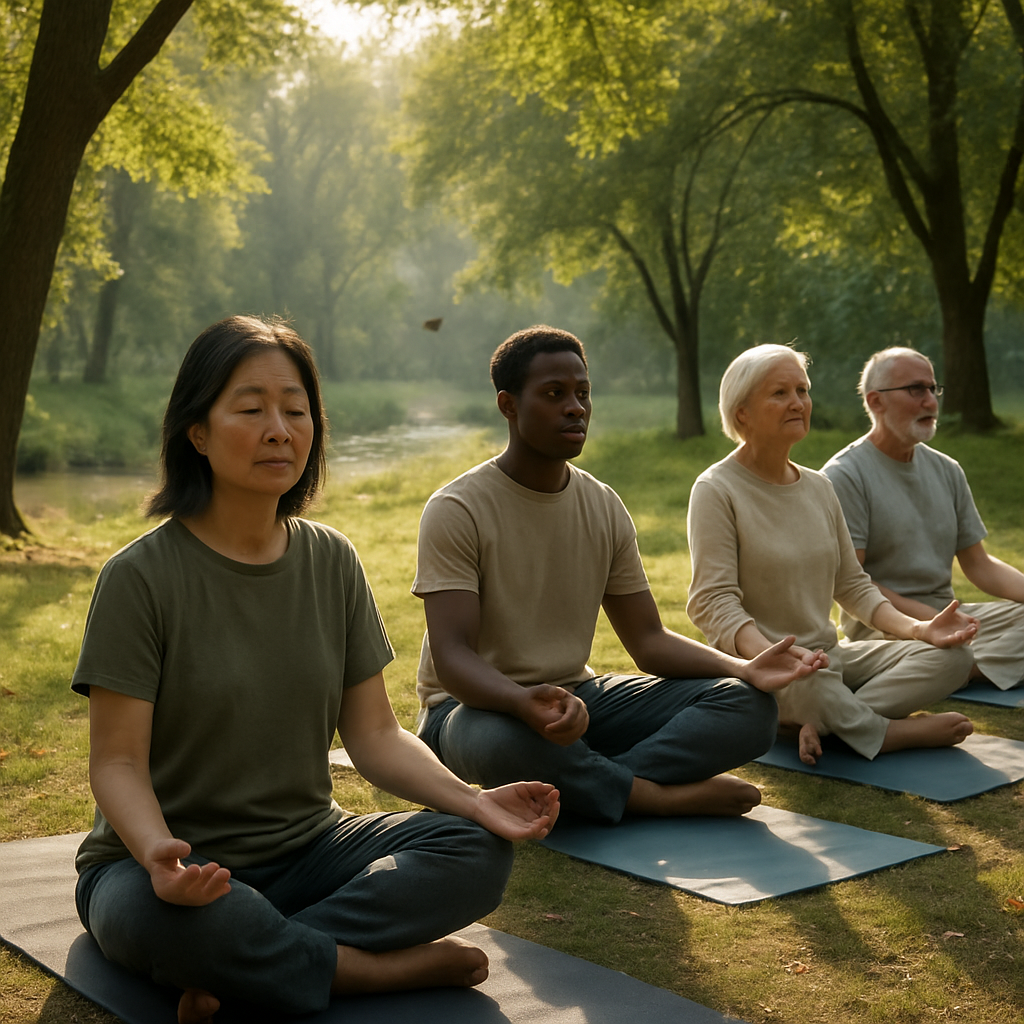The mindfulness revolution transforming mental health

The whisper of mindfulness in mental health is getting louder, almost like that background song you didn’t realize you’d memorized the lyrics to until you found yourself singing along. It’s everywhere you look these days. From apps to therapy sessions, the concept of being present, aware, and in the moment is making significant waves in how we approach mental well-being. And it’s not just a passing fad like those kale smoothies everyone was into for a hot minute. Mindfulness has deep roots and a genuine impact that’s hard to ignore.
But wait, what exactly are we talking about here? Mindfulness, in its most straightforward form, is the practice of maintaining a moment-by-moment awareness of our thoughts, feelings, bodily sensations, and the surrounding environment. It’s like having a live commentary of your life but without judgment or critique. It’s all about accepting your thoughts and feelings without labeling them as good or bad. Jon Kabat-Zinn, a well-known figure in this field, developed the Mindfulness-Based Stress Reduction (MBSR) program back in the late 1970s, and since then, mindfulness has been making its way into schools, hospitals, and even the military.
The Buzz Around Mindfulness
You may have heard someone in your yoga class or during a work meeting mention how mindfulness has been a game-changer for their anxiety or stress levels. It’s intriguing, right? While it might sound like new-age mumbo jumbo to some, there’s substantial research backing its benefits. According to a study published in the journal “Psychiatry Research” in 2011, participants who engaged in an eight-week mindfulness meditation program exhibited increased gray matter density in brain regions involved in learning, memory processes, emotion regulation, and perspective-taking. Now, I don’t know about you, but anything that might boost my brain’s ability to handle emotions gets my attention.
But here’s where it gets interesting. I used to think of mindfulness as this super zen, almost mystical practice that was out of reach for someone like me your average person who gets sidetracked by a Twitter notification every few minutes. But now I’m not so sure. What I’ve come to realize is that mindfulness doesn’t require you to sit cross-legged on a mountain top. It can be as simple as taking a few deep breaths before responding to that snarky email or savoring the taste of your morning coffee without the distraction of emails or social media. And that’s where it becomes accessible to everyone.
Real Life, Real Impact
A few months back, my friend Jake, a high-school teacher, shared his unexpected journey with mindfulness. After a particularly overwhelming semester think grading hundreds of papers while managing a classroom full of teenagers he found himself teetering on the edge of burnout. His school introduced a mindfulness workshop, and, somewhat skeptically, Jake decided to give it a shot. Fast forward to today, Jake swears by his 10-minute morning meditation routine and claims it’s the only reason he hasn’t resorted to a career change or drastic measures like moving to a deserted island.
Jake’s story isn’t unique. A significant body of research supports the effectiveness of mindfulness in reducing symptoms of depression and anxiety. In 2015, a meta-analysis published in “JAMA Internal Medicine” reviewed 47 studies involving over 3,500 participants. The results highlighted that mindfulness meditation programs showed moderate evidence of improving anxiety, depression, and pain. The fact that something so simple can have such profound effects is fascinating and a bit counterintuitive, don’t you think?
But, you know, mindfulness isn’t just about handling stress or avoiding burnout. It’s also about enhancing the quality of life by cultivating a deeper connection with oneself and the surrounding world. It encourages a sort of mental spring cleaning, helping us let go of unnecessary clutter, whether it’s unhelpful thoughts or negative emotions.
Mindfulness in Therapy and Everyday Life
Therapists and mental health practitioners are increasingly incorporating mindfulness techniques into their practices. Dialectical Behavior Therapy (DBT), for instance, uses mindfulness as one of its core components to help individuals manage stress, regulate emotions, and improve relationships with others. DBT was developed by Dr. Marsha Linehan, who saw the potential of mindfulness in helping patients, particularly those dealing with borderline personality disorder, achieve greater control over their thoughts and behaviors.
But let’s step out of the therapist’s office for a moment. Mindfulness can be seamlessly integrated into daily life, making ordinary moments extraordinary. Picture this: you’re washing dishes, a mundane chore at best. Instead of mentally drafting your grocery list, you focus on the feel of the warm water, the smell of the soap, the sound of dishes clinking. Suddenly, a boring task becomes a sensory experience, grounding you in the present and perhaps offering a moment of unexpected peace.
The beauty of mindfulness is that it doesn’t require a specific setting or a hefty investment. You don’t need fancy equipment or a guru’s guidance to start. Apps like Headspace and Calm have made it easier than ever to dip your toes into meditation and mindfulness practices. These platforms offer guided sessions that cater to various needs whether it’s improving sleep, reducing stress, or increasing focus.
A Few Bumps Along the Way
It’s not all sunshine and rainbows, though. Like any practice, mindfulness can have its pitfalls. Some people find it challenging to maintain consistency or struggle with feelings of frustration when their mind refuses to quiet down. And, to be honest, sitting with your thoughts can sometimes bring up uncomfortable emotions we’d rather avoid. But here’s the kicker: mindfulness teaches us that it’s okay to feel those emotions without judgment, and that’s where the growth happens.
I remember trying out a mindful eating exercise in a workshop once. The task was to eat a single raisin as slowly as possible, savoring every detail. As someone who usually scarfs down a meal in record time, I found it incredibly challenging and, to be frank, a little silly. But that exercise opened my eyes to how often I operate on autopilot. It was a reminder of how powerful it is to slow down, even if it feels awkward at first.
Mindfulness isn’t a magic bullet, but an invitation to be present, to face life with openness and curiosity. And while it may not solve every problem, it offers tools to navigate life’s ups and downs with a bit more grace and awareness.
In a world that seems to move at breakneck speed, cultivating mindfulness might just be the revolution our mental health landscape needs. Whether through meditation, mindful breathing, or simply being present in everyday activities, this practice offers a path to greater self-awareness and emotional resilience. As we continue to explore and understand its potential, mindfulness stands as a testament to the power of being present one moment at a time.


